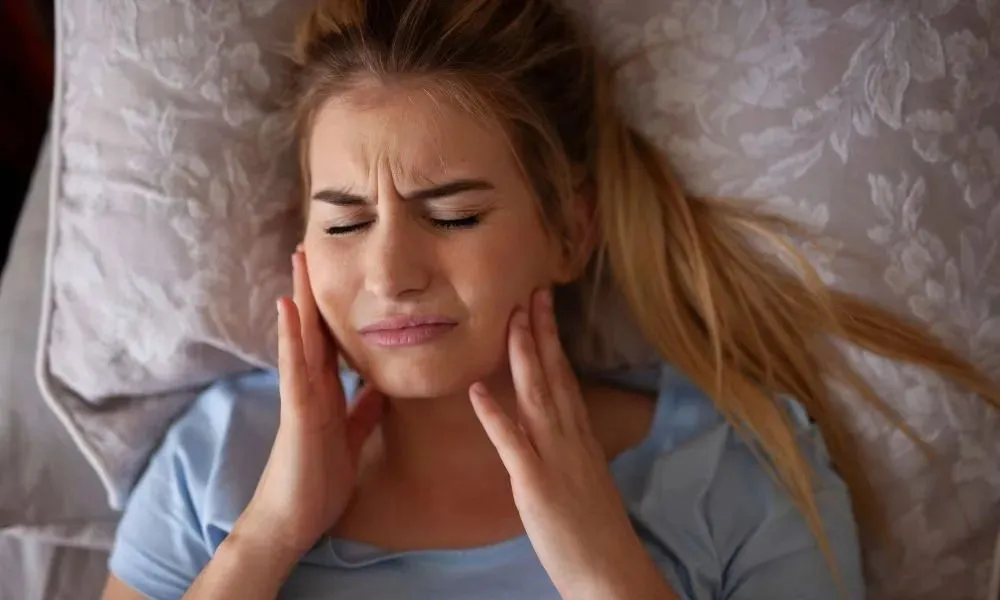TMJ Disorder Treatment Naperville, IL

TMJ/Jaw Pain
The temporomandibular joint, called TMJ, acts like a sliding hinge connecting the lower jaw to the skull base. Located on either side of the head, the TMJ work together when you swallow, chew, and talk. Each TMJ has a soft cartilage disc that acts as a cushion between the bones of the joint and skull base. Any problems that prevent this complex system of ligaments, muscles, discs, and bones from working properly may result in painful TMJ disorder.
Possible causes of TMJ pain:
- Arthritis
- Disc displacement or disc erosion
- Injury
- Dislocation
- Sleep Bruxism (grinding)
- Clenching
- Misaligned teeth
- Cartilage damage by arthritis
- Ear pain
- Noises in the ear
- Clicking/popping
- Limited mouth opening
Risk factors of TMJ:
- Different types of Arthritis
- Jaw injury
- Fibromyalgia
- Osteoporosis
- Rheumatologic concerns
- Headaches
- Stress
- Long-term grinding/clenching of teeth
- Certain connective tissue diseases
- Chronic ear pain
- Sleep apnea
Advanced Techniques
Cold Laser Therapy
Cold laser therapy, also known as low-level laser therapy (LLLT), is a non-invasive treatment that uses low levels of light to stimulate healing. For Temporomandibular Joint Disorders (TMJ), it is used to alleviate pain and inflammation caused by the disorder. The therapy operates on a cellular level by absorbing the laser light, which triggers biological reactions that promote the healing process. It's a pain-free treatment that can offer relief to those suffering from TMJ without the need for surgery or medication.
Tensing
A TENS (Transcutaneous Electrical Nerve Stimulation) unit is often used as a non-invasive treatment method for Temporomandibular Joint (TMJ) disorders. It works by sending low-voltage electrical currents through electrodes placed on the skin near the affected area. These pulses help reduce muscle tension and stimulate the release of endorphins, the body’s natural painkillers, thus providing relief from TMJ-related pain. Use of a TENS unit may help alleviate symptoms such as jaw pain or headaches and improve jaw function, contributing to an overall better quality of life.
Unlockings
If you have a locked jaw or limited mouth opening, you may benefit from an unlocking procedure. Dr. Patel conducts thorough evaluations to see if an unlocking procedure might be successful. If that determination is made, the procedure is simple. An injection or anesthetic is administered directly into the jaw joint, and with a series or jaw manipulations Dr. patel is able to unlock the jaw and restore mobility. In some cases, multiple attempts are necessary, and PRF therapy is recommended to reduce inflammation and increase healing.
FAQ's
